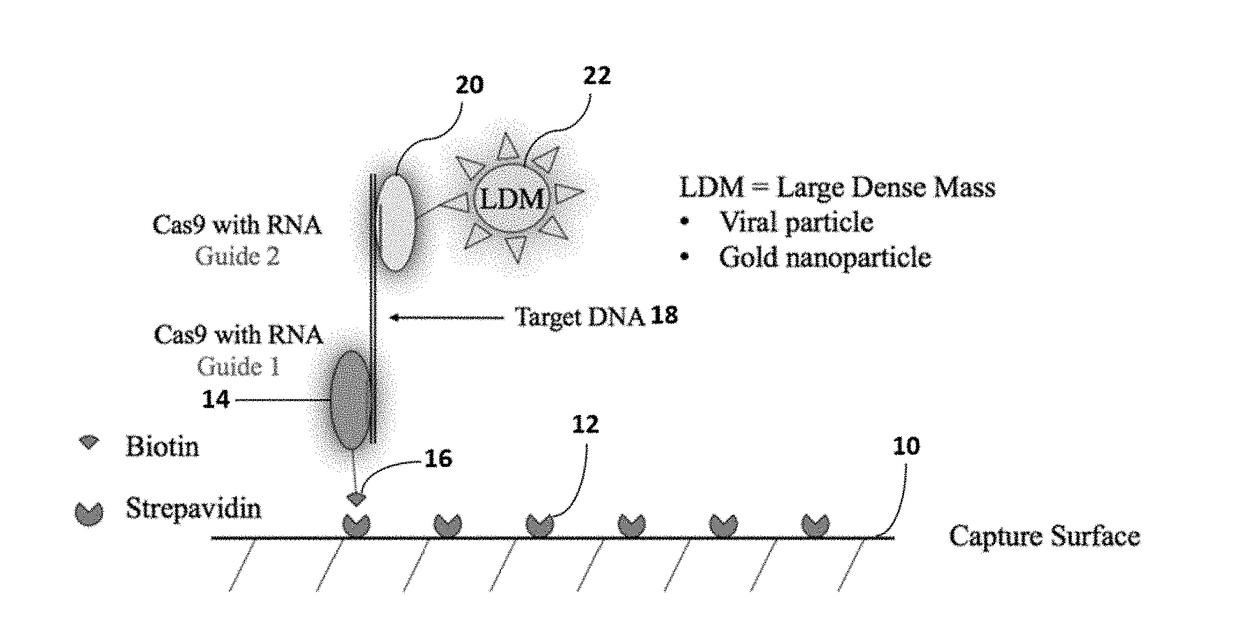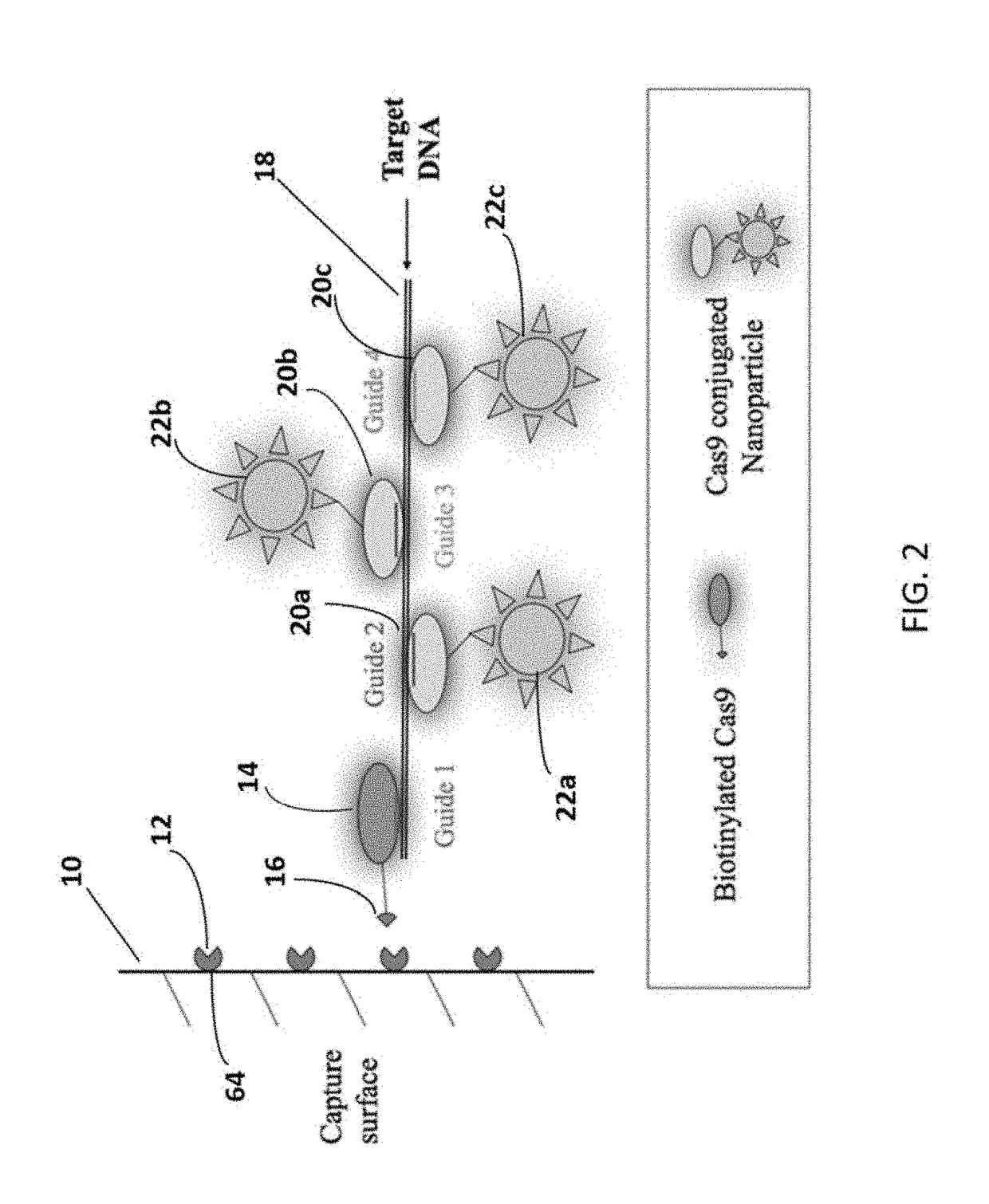Method for isothermal DNA detection using a modified crispr/cas system and the apparatus for detection by surface acoustic waves for gene editing
a technology of surface acoustic waves and isothermal dna detection, which is applied in the direction of biochemical apparatus and processes, material electrochemical variables, and electrochemical variables, etc., can solve the problem of inability to readily measure the outcome of such biological events or processes in a near real time method, and achieve enhanced mass dna, enhanced lod, and enhanced mass dna
- Summary
- Abstract
- Description
- Claims
- Application Information
AI Technical Summary
Benefits of technology
Problems solved by technology
Method used
Image
Examples
Embodiment Construction
[0060]Using two Nickase dead mutant Cas9 proteins, each loaded with different guide RNA, a DNA capture and detection amplification system is developed for DNA detection in a SAW device. No temperature cycling is required in preparation of the DNA segments as is the case of polymerase chain reactions (PCR). A Cas9 protein with guide RNA 1, collectively denoted by reference numeral 14, is modified such that it can be captured on the surface of a SAW chip 10 as diagrammatically depicted in FIG. 1. For example, the detection surface of SAW chip 10 is coated with strepavidin 12 to bind biotinylated Cas9 14 using biotin 16. The guide 1 RNA 14 encodes for binding to a selected DNA sequence 1 and hence any DNA 18 containing this sequence will be captured on the chip surface 10 by the biotinylated Cas9 14. The strepavidin / biotin system 12, 16 is only one example of potential capture pair which could be utilized, and it has the advantage of binding to surface 10 such that DNA 18 tends to be v...
PUM
| Property | Measurement | Unit |
|---|---|---|
| Thickness | aaaaa | aaaaa |
| Nanoscale particle size | aaaaa | aaaaa |
| Semiconductor properties | aaaaa | aaaaa |
Abstract
Description
Claims
Application Information
 Login to View More
Login to View More - R&D
- Intellectual Property
- Life Sciences
- Materials
- Tech Scout
- Unparalleled Data Quality
- Higher Quality Content
- 60% Fewer Hallucinations
Browse by: Latest US Patents, China's latest patents, Technical Efficacy Thesaurus, Application Domain, Technology Topic, Popular Technical Reports.
© 2025 PatSnap. All rights reserved.Legal|Privacy policy|Modern Slavery Act Transparency Statement|Sitemap|About US| Contact US: help@patsnap.com



